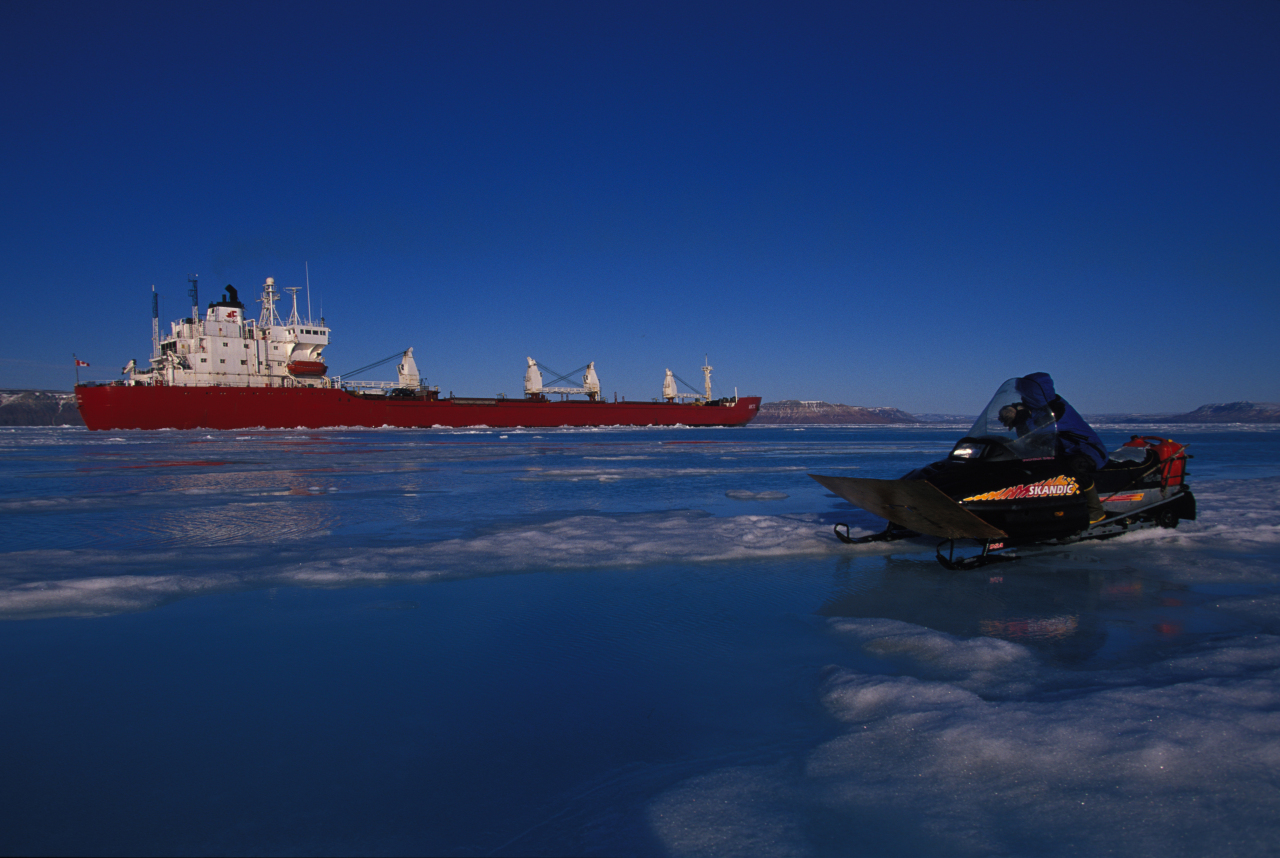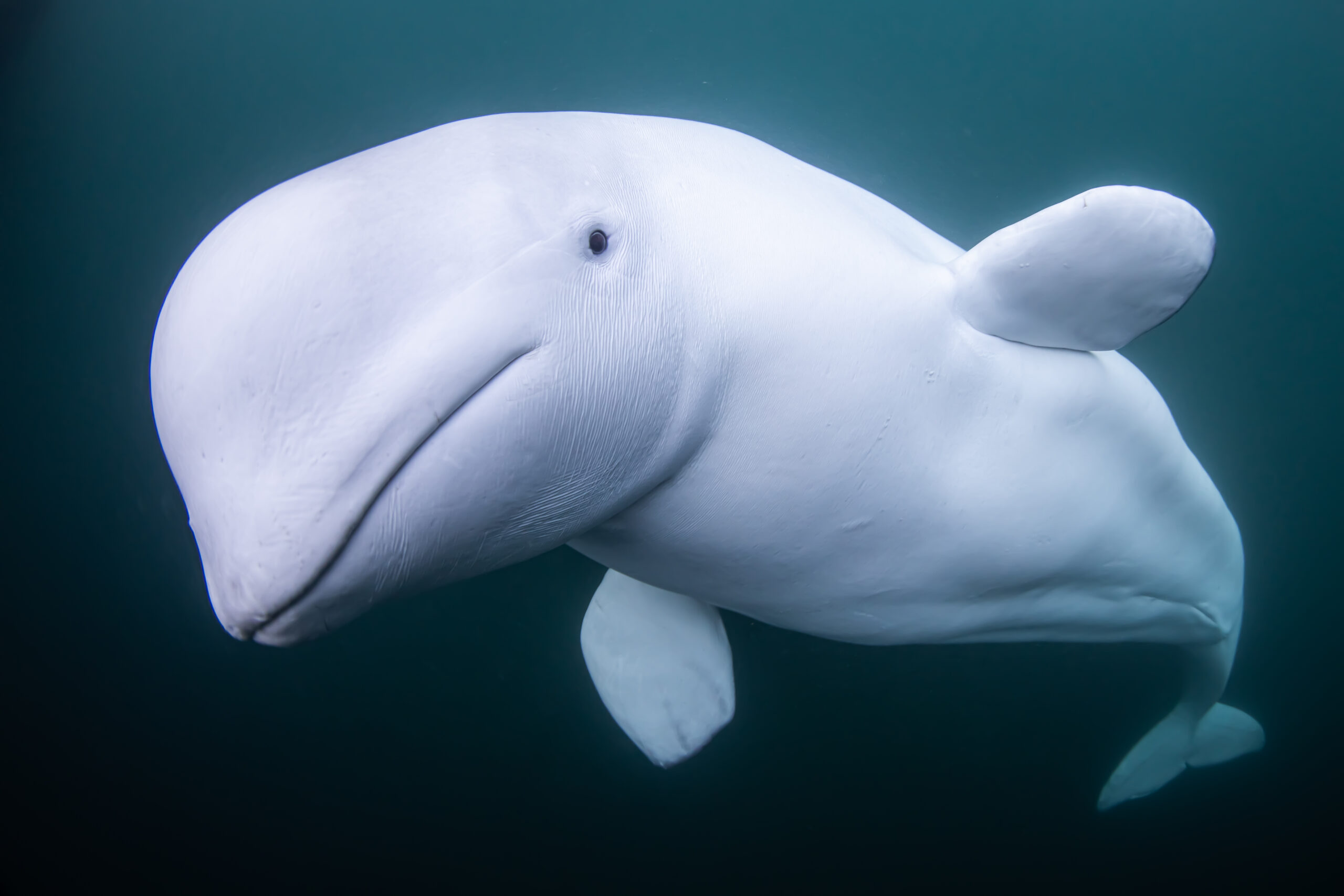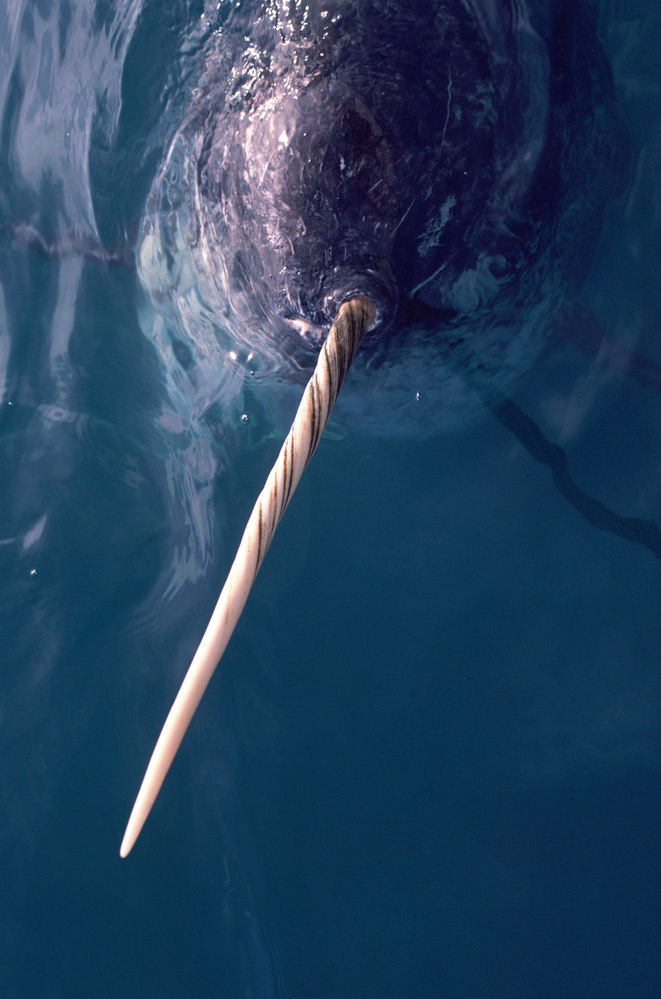Help sound the alarm for underwater noise protection in the Canadian Arctic
By Kailee Scott and Kristen Powell, Marine Conservation and Shipping
The ice-cold waters of what is now called the Canadian Arctic had always been a serene paradise for marine mammals such as beluga and bowhead whales, narwhal and walrus. They have come to depend on quiet to communicate across vast distances underwater, find food and mates, and avoid danger.
But this paradise is becoming a thing of the past as a cacophony of noise from industrial activities — noise and vibration from ship propellers and machinery, ice-breaking activities, sonar pulses from resource exploration and marine construction, among others — is collectively drowning out the natural ocean soundscape these mammals need.

As climate change continues to increase Arctic temperatures at an unprecedented rate, nearly four times faster than the global average, sea ice is melting rapidly. Underwater noise, which travels over four times faster in water than air, also travels varying distances based on depth, temperature, pressure and sea-ice conditions.
Since sea ice refracts and reduces the movement of sound through ocean water, the ever-shrinking sea-ice extent and ever-longer ice-free summer season is allowing sounds to spread even further while simultaneously increasing the frequency and intensity of industrial activities and allowing more ships into the region.

Over the past decade, the distance sailed by ships within the International Maritime Organization’s Arctic Polar Code area (the Arctic Ocean and adjacent seas) more than doubled, from 6.1 million to 12.9 million nautical miles, bringing along a drastic increase in underwater noise emitted by these ships.
A 2021 Arctic Council report found that some parts of the region experienced a doubling of underwater noise pollution between 2013 and 2019. And the volume has only risen since, jeopardizing the stability and survival of Arctic species populations.
Research shows noise pollution can cause temporary or permanent damage to marine mammals, including hearing loss and physiological stress. Underwater noise can also displace species from known habitats, which has consequences for Inuit food security.
Since its inception in 2016, WWF-Canada’s Arctic Species Conservation Fund has been supporting underwater noise research by local community, academic and government partners in Foxe Basin, Hudson Bay, Eclipse Sound and Baffin Bay. Research results help build and bridge our collective scientific and Indigenous knowledge on both the short-term and cumulative impacts of underwater noise pollution on Arctic species.

But we cannot sit around and wait any longer. We also need urgent action from the federal government to finalize their now-released draft Ocean Noise Strategy and ensure the associated Federal Action Plan contains special considerations for the Arctic. This includes establishing baseline noise levels (i.e., what it sounds like underwater without human activity) and then setting decibel-based limits for activities like shipping, construction and seismic exploration.
The public consultation period concludes on Oct. 22. Lacking clarity on a timeline for finalizing and implementing the strategy, Canada should apply a precautionary approach, taking actionable steps based on already available scientific and Inuit knowledge to effectively manage Arctic underwater noise pollution now, before it’s too late.
The noise-mitigation recommendations in our recent legal analysis include putting measures into Marine Protected Areas management plans that limit noise-generating activities (slowing ships down, creating no-go zones) and establish regional standards and requirements for underwater noise through Oceans Act regulations. Transport Canada should use similar tactics to address cumulative shipping noise impacts in other sensitive and protected marine areas.
WWF-Canada will continue calling for a final Ocean Noise Strategy and Federal Action Plan that delivers meaningful, measurable and urgent action to safeguard Canada’s iconic Arctic species for generations to come, and we encourage everyone to participate in the public consultation to ensure your priorities are heard.
To learn more about underwater noise threats in all three of Canada’s oceans and contribute to the public consultation, click here.

